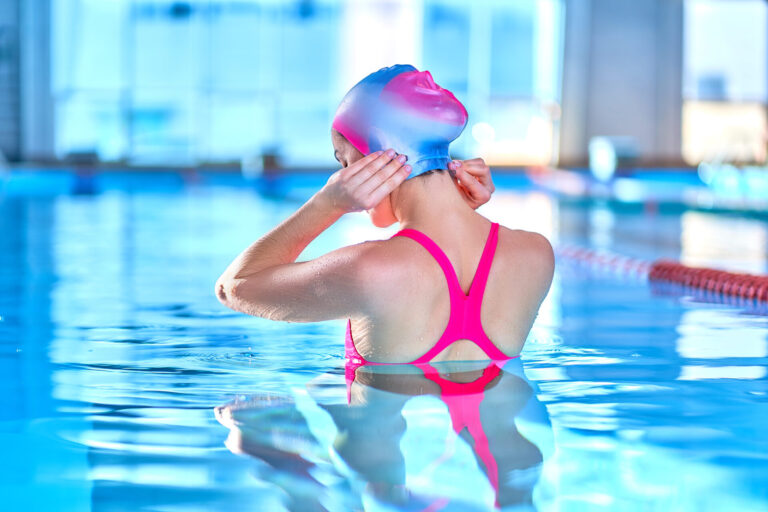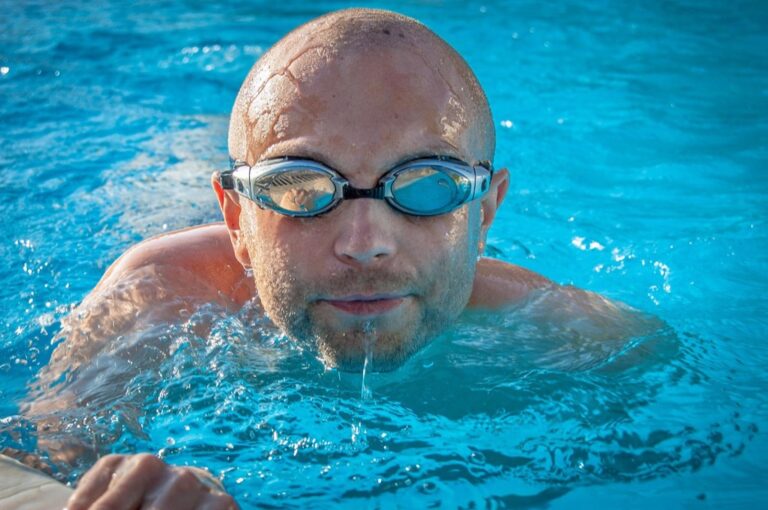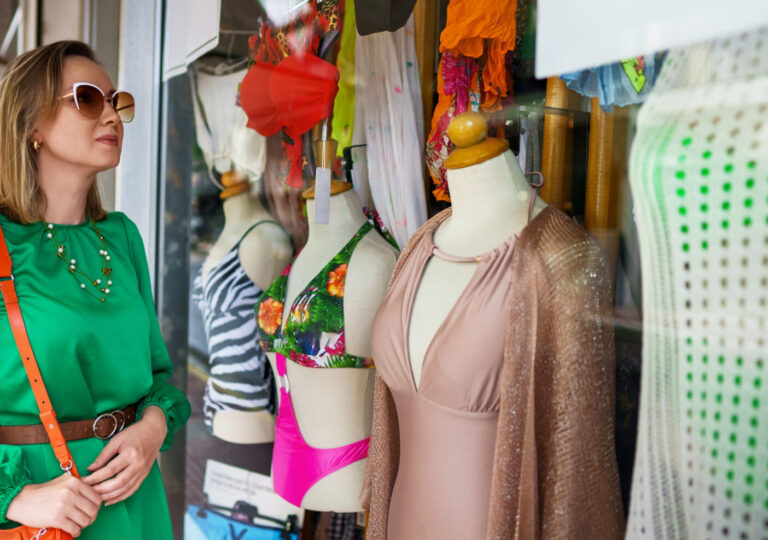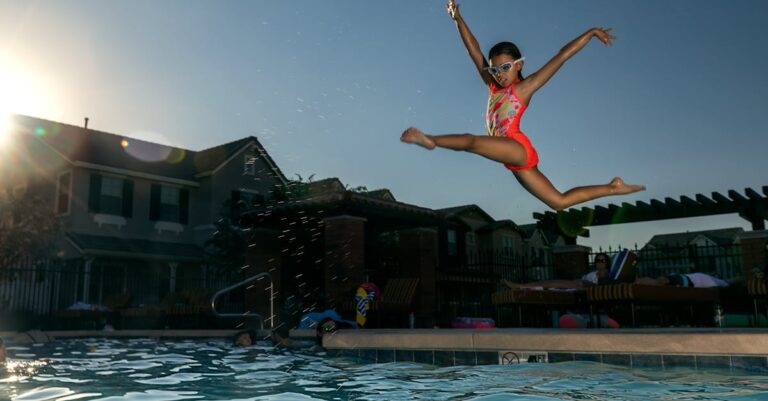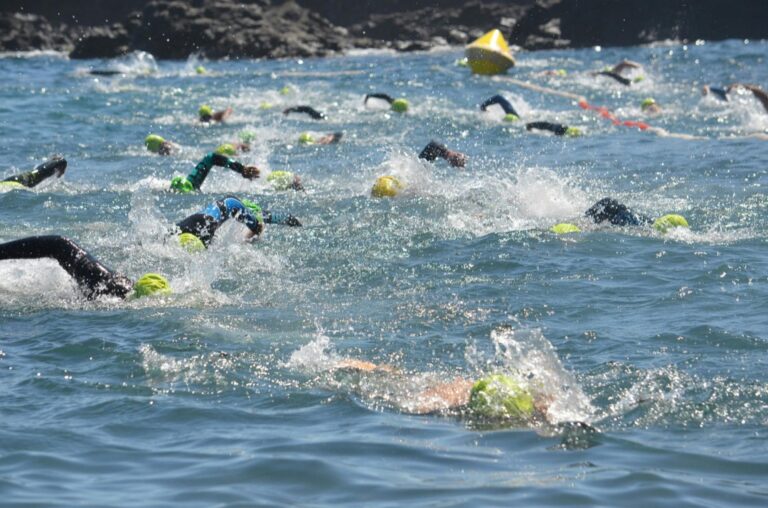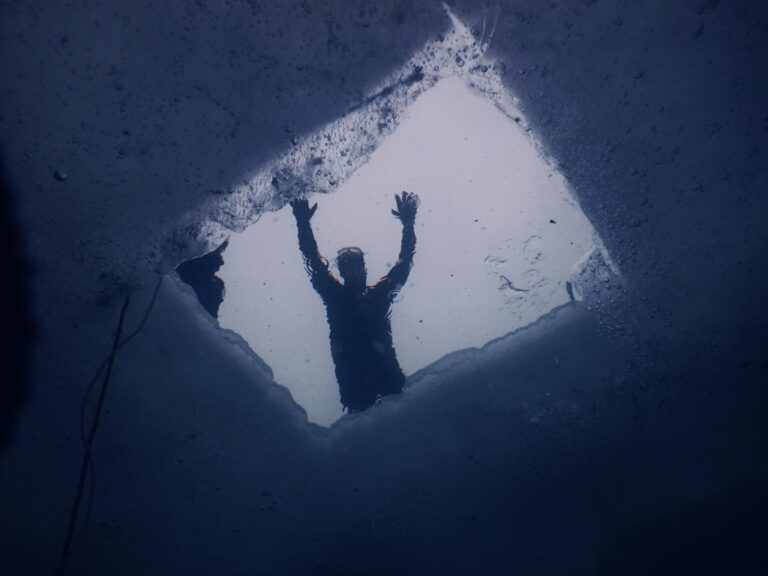7 Best Swimming Aids for Beginner Swimmers That Build Confidence Fast
Discover the 7 best swimming aids for beginners! From arm floaties to swim belts, these tools build confidence, improve technique, and ensure safety as you learn to navigate the water.
Learning to swim can feel intimidating, but the right swimming aids make the journey safer and more enjoyable. Whether you’re an adult taking your first dip or a parent helping your child gain confidence in the water, quality swimming aids provide crucial support during those early stages.
In this guide, we’ll explore the seven best swimming aids that can help beginner swimmers develop proper technique while ensuring safety remains the top priority. From buoyancy belts to kickboards, these tools are designed to build confidence and assist with mastering fundamental swimming skills.
Disclosure: As an Amazon Associate, this site earns from qualifying purchases. Thank you!
How Swimming Aids Can Boost Confidence for Beginner Swimmers
Swimming aids do much more than just keep beginners afloat—they serve as powerful confidence boosters in the water. When you’re first learning to swim, fear and anxiety can significantly hinder your progress. Swimming aids provide the physical support that transforms that anxiety into assurance, allowing you to focus on technique rather than survival.
Proper swimming aids create a positive feedback loop of confidence building. As you achieve small successes with support, your brain registers these wins, gradually reducing water-related anxiety. Many beginners report feeling immediately more comfortable when using appropriate flotation devices, which lets them practice longer and learn faster.
Swimming aids also allow for gradual skill progression at your own pace. Instead of feeling rushed to swim independently, you can systematically reduce dependence on aids as your abilities improve. This step-by-step approach prevents the confidence-crushing experience of being thrown into deep water before you’re ready, making the entire learning process more enjoyable and effective.
1. Swim Floaties: Perfect First Step for Water Confidence
This swim vest keeps kids (22-66 lbs, ages 2-7) safe and comfortable in the water. The U-shaped design and adjustable buckle straps provide a secure and confident fit for beginner swimmers.
Swim floaties provide essential buoyancy and stability for beginners taking their first strokes in water. These simple yet effective devices create a safe environment for new swimmers to build confidence while developing basic water skills.
Types of Arm Floaties for Different Age Groups
- Inflatable Arm Bands offer adjustable buoyancy and fit snugly around arms for various age groups, providing customizable stability as swimming skills improve.
- Foam Arm Bands deliver consistent buoyancy without inflation hassles, making them reliable options for children at different swimming levels.
- Combination Floaties integrate arm bands with chest support, creating extra stability for younger children who need more comprehensive assistance in the water.
How to Properly Size and Fit Arm Floaties
- Proper Fit requires snug but comfortable placement around your child’s arms without restricting circulation. Look for adjustable straps that accommodate growth while maintaining security.
- Weight Limits matter significantly—always check both minimum and maximum weight recommendations on floaties to ensure they provide appropriate buoyancy for your child’s specific needs.
2. Kickboards: Essential Tools for Leg Strength Development
Kickboards are versatile swimming aids that help beginners focus exclusively on leg technique while keeping their upper body supported. These simple foam platforms provide the perfect balance of buoyancy and stability that allows new swimmers to build crucial leg strength without worrying about staying afloat.
Best Kickboard Materials for Durability and Comfort
Most high-quality kickboards are made from EVA foam, offering excellent buoyancy while remaining lightweight and comfortable against your chest. Look for closed-cell foam designs that resist water absorption and maintain their shape over time. Some premium models feature ergonomic cutouts and handles that reduce shoulder strain during extended practice sessions.
Effective Kickboard Drills for Beginners
Start with basic flutter kicks holding the kickboard with extended arms, focusing on keeping your legs straight with toes pointed. Progress to streamline drills by positioning the kickboard above your head to improve body alignment. Try single-leg kicks to identify and correct imbalances, alternating 30 seconds per leg. For variety, practice breaststroke kicks while holding the kickboard, emphasizing the circular whip motion.
3. Pull Buoys: Mastering Upper Body Technique
Improve your swim technique with this durable EVA foam pull buoy. It elevates your hips and legs for proper alignment, allowing you to focus on stroke and rotation while building upper body strength.
Pull buoys are foam devices shaped like peanuts that provide buoyancy for your lower body while swimming. They’re specifically designed to help you focus on developing proper arm technique without worrying about keeping your legs afloat.
How Pull Buoys Improve Stroke Mechanics
Pull buoys elevate your hips and legs, creating an optimal streamlined position in the water. By eliminating leg movement, they force you to rely solely on your arms, helping you develop stronger pulling patterns and better rotation. This targeted approach reduces drag from sinking legs—a common problem for beginners—allowing you to concentrate entirely on perfecting your arm strokes and breathing technique.
When to Introduce Pull Buoys in Swimming Progression
Introduce pull buoys after you’ve developed basic water comfort with other aids like kickboards or floaties. They’re most effective once you understand fundamental kicking movements and can maintain some body position on your own. Start with short intervals using the pull buoy between your thighs, gradually increasing duration as your upper body strength improves. This progression ensures you build proper technique from the beginning.
4. Swim Noodles: Versatile Support for Multiple Skill Levels
Enjoy effortless floating with this pool noodle, supporting up to 250 lbs. Its ribbed texture provides a secure, comfortable grip, while the durable, UV-resistant design ensures long-lasting use.
Swim noodles are colorful foam tubes that offer exceptional versatility for swimmers of all abilities. These lightweight, flexible aids provide reliable buoyancy while allowing freedom of movement, making them perfect for beginners developing water confidence or more advanced swimmers practicing specific techniques.
Creative Ways to Use Swim Noodles in Training
Swim noodles transcend basic flotation to become multi-purpose training tools. Hold them across your chest for supported floating while practicing leg kicks. Place them under your arms for balanced body position work. Create a figure-8 shape for a makeshift kickboard. You can even use noodles as lane markers for swimming drills or cut them into sections for hand-held resistance tools during water exercises.
Choosing the Right Noodle Density for Your Needs
Noodle density directly impacts buoyancy and support levels. Softer, less dense noodles provide maximum flotation for young children and complete beginners who need substantial support. Firmer, denser noodles offer moderate buoyancy for older children and adults building confidence. The ideal density should provide enough support to keep you comfortable without restricting natural movement or creating overdependence on the aid.
5. Swimming Goggles: Enhancing Underwater Visibility and Comfort
Swimming goggles are essential for beginners as they provide clear vision underwater while protecting eyes from chlorine and other irritants. Though not a buoyancy aid, goggles significantly improve the learning experience by allowing swimmers to see properly underwater.
Features to Look for in Beginner-Friendly Goggles
- Leak-proof seal is critical—look for soft silicone gaskets that create a watertight fit against your face
- Adjustable straps ensure proper tension without causing headaches or discomfort
- Anti-fog coating prevents visibility issues during lessons and practice sessions
- UV protection is essential for outdoor swimming to protect eyes from harmful sun rays
- Proper sizing options (especially for children) prevent water leakage and eye pressure
Top Brands That Offer Leak-Proof Designs
- Speedo offers the Vanquisher series with contoured eye cups and exceptional leak resistance for both adults and children
- Arena provides the Cobra Ultra goggles with advanced anti-fog technology and minimal water entry
- Zoggs specializes in Predator Flex goggles featuring 4-point flexibility that adapts to different face shapes
- AquaSphere delivers the Kayenne and Seal Kid models with patented curved lens technology for maximum visibility
6. Swim Fins: Boosting Propulsion and Ankle Flexibility
Swim fins are powerful training tools that dramatically improve your propulsion while developing proper kick technique and ankle flexibility. These essential swimming aids help beginners build leg strength and develop core stability, making them valuable additions to your swimming toolkit.
Short vs. Long Fins: Which Is Better for Beginners?
Short fins are ideal for beginners as they provide moderate resistance that won’t overwhelm new swimmers. They enhance ankle flexibility without creating excessive strain and help you develop proper flutter kick technique. While long fins generate more power and speed, they’re typically better suited for intermediate swimmers who’ve already built foundational strength.
Gradual Progression Plans Using Swim Fins
Start with short fins for 10-15 minute sessions, focusing on basic flutter kicks and proper body position. Progress by gradually increasing workout duration to 20-30 minutes as your leg strength improves. Practice swimming without fins periodically to build natural technique, then eventually incorporate fins for specific drills rather than full sessions to ensure balanced skill development.
7. Back Floats and Swim Belts: Promoting Proper Body Position
Help your child learn to swim with this adjustable swim float belt. It provides buoyancy and balance with removable layers and a secure double-buckle design for ages 2-8 (20-50 lbs).
Back floats and swim belts offer essential support for beginners while encouraging proper body alignment in the water. These versatile aids help swimmers maintain a horizontal position, which is fundamental for efficient swimming technique.
Adjustable Options That Grow With Your Swimming Skills
Swim belts feature foam segments attached to adjustable nylon straps that wrap securely around your waist. You can easily customize the buoyancy level by adding or removing foam blocks as your confidence improves. Most quality swim belts accommodate waist sizes from 24-42 inches and support weights up to 220 pounds, making them suitable for children and adults alike.
Transitioning From Full Support to Minimal Assistance
The beauty of back floats and swim belts lies in their progressive design. Start with maximum buoyancy (all foam segments) while practicing basic strokes and breathing techniques. As your skills improve, remove one segment at a time to gradually increase the challenge. This systematic reduction helps you develop core strength and balance while preventing the anxiety that comes with removing support too quickly.
How to Choose the Right Swimming Aids Based on Your Goals and Comfort Level
The perfect swimming aid depends on your specific needs and learning stage. For absolute beginners focused on water confidence try arm floaties or swim belts that provide maximum buoyancy. If you’re working on technique kickboards and pull buoys help isolate specific muscle groups for targeted practice.
Always prioritize comfort and proper fit as uncomfortable aids can distract from learning. Start with more supportive options then gradually reduce dependency as your skills improve. Remember that swimming aids are temporary training wheels not permanent solutions.
By selecting the right combination of these seven essential swimming aids you’ll create a safer more enjoyable learning environment. With consistent practice and the right support you’ll soon find yourself swimming confidently without assistance enjoying all the physical and mental benefits swimming has to offer.
Frequently Asked Questions
What are swimming aids and why are they important for beginners?
Swimming aids are devices that provide buoyancy and support in water. They’re crucial for beginners because they make learning to swim safer and more enjoyable by providing physical support, allowing learners to focus on technique rather than survival. They serve as confidence boosters, transforming fear into assurance while enabling gradual skill progression, making the entire learning process more effective for both children and adults.
Which swimming aid is best for someone with no water confidence?
Swim floaties (arm bands) are the perfect first step for absolute beginners with no water confidence. They provide essential buoyancy and stability that allows beginners to develop basic water skills in a safe environment. Look for properly sized arm floaties that fit snugly yet comfortably, and always adhere to weight limits for optimal safety and buoyancy.
How do kickboards help improve swimming technique?
Kickboards support the upper body while allowing beginners to focus exclusively on leg technique. Made from durable EVA foam, they help develop leg strength through drills like flutter kicks, streamline drills, and single-leg kicks. This focused practice enhances leg power and proper kicking technique while building the foundation for overall swimming proficiency.
What are pull buoys and when should beginners use them?
Pull buoys are foam devices that provide buoyancy for the lower body, allowing swimmers to focus on arm technique. They elevate the hips and legs, creating an optimal streamlined position and reducing drag. Beginners should use pull buoys after developing basic water comfort with other aids, starting with short intervals to gradually build upper body strength and proper stroke mechanics.
Are swim noodles effective for adult beginners?
Yes, swim noodles are effective for adult beginners. These versatile foam tubes provide reliable buoyancy while allowing freedom of movement. Adults should choose firmer noodles that offer moderate buoyancy without restricting natural movement. They can be used for supported floating, balanced body position work, or as makeshift kickboards, making them suitable for swimmers of all abilities.
Why are swimming goggles considered essential for beginners?
Swimming goggles enhance underwater visibility and protect eyes from chlorine and other irritants. While not buoyancy aids, they significantly improve the learning experience by allowing beginners to see clearly underwater, reducing anxiety and increasing comfort. Beginners should look for goggles with leak-proof seals, adjustable straps, anti-fog coating, UV protection, and proper sizing.
How should beginners use swim fins effectively?
Beginners should use swim fins in short sessions initially, focusing on basic kicking techniques. Short fins are recommended as they provide moderate resistance without overwhelming new swimmers. As skills improve, gradually increase duration and incorporate fins into specific drills. This progression helps develop ankle flexibility and proper kick technique while building leg strength in a controlled manner.
What advantages do swim belts offer over other buoyancy aids?
Swim belts feature adjustable foam segments that allow users to customize buoyancy levels as their skills improve. Unlike fixed buoyancy aids, they promote proper body position and horizontal alignment while enabling progressive reduction of support. This adjustability helps beginners gradually build core strength and balance at their own pace, making them ideal for those transitioning from complete dependency to independent swimming.






